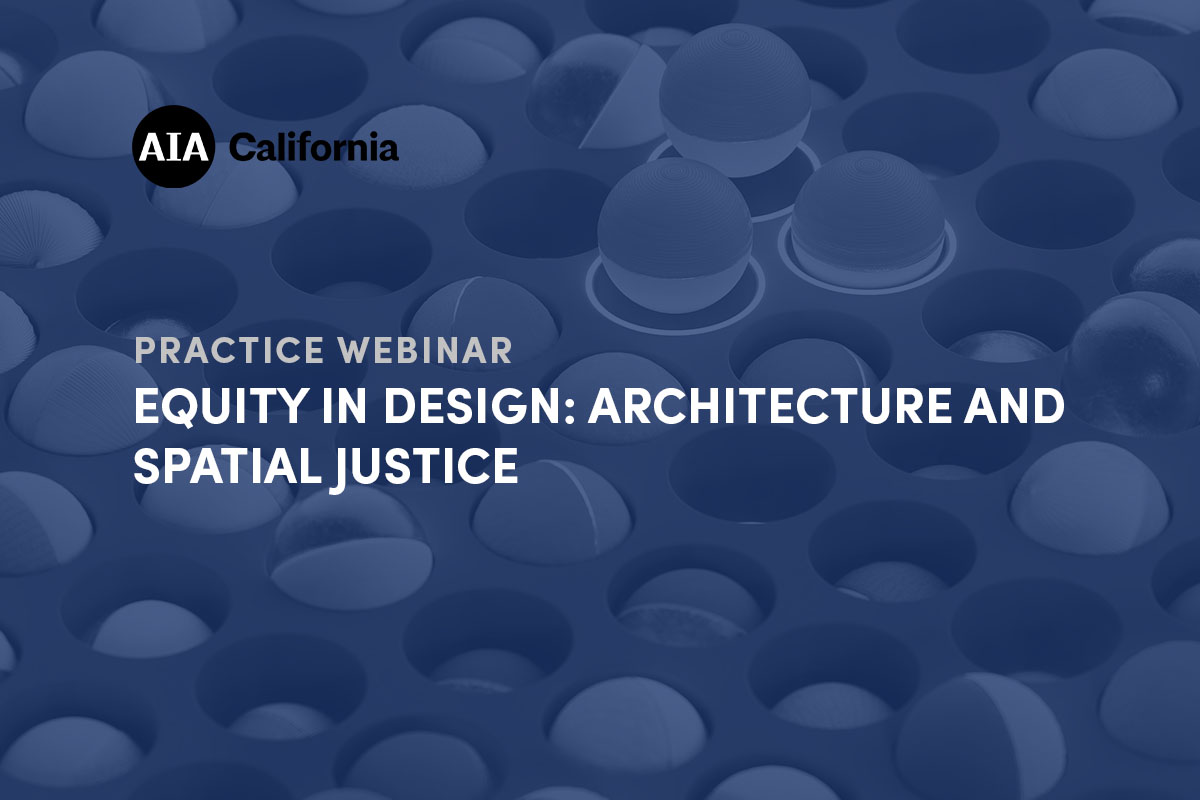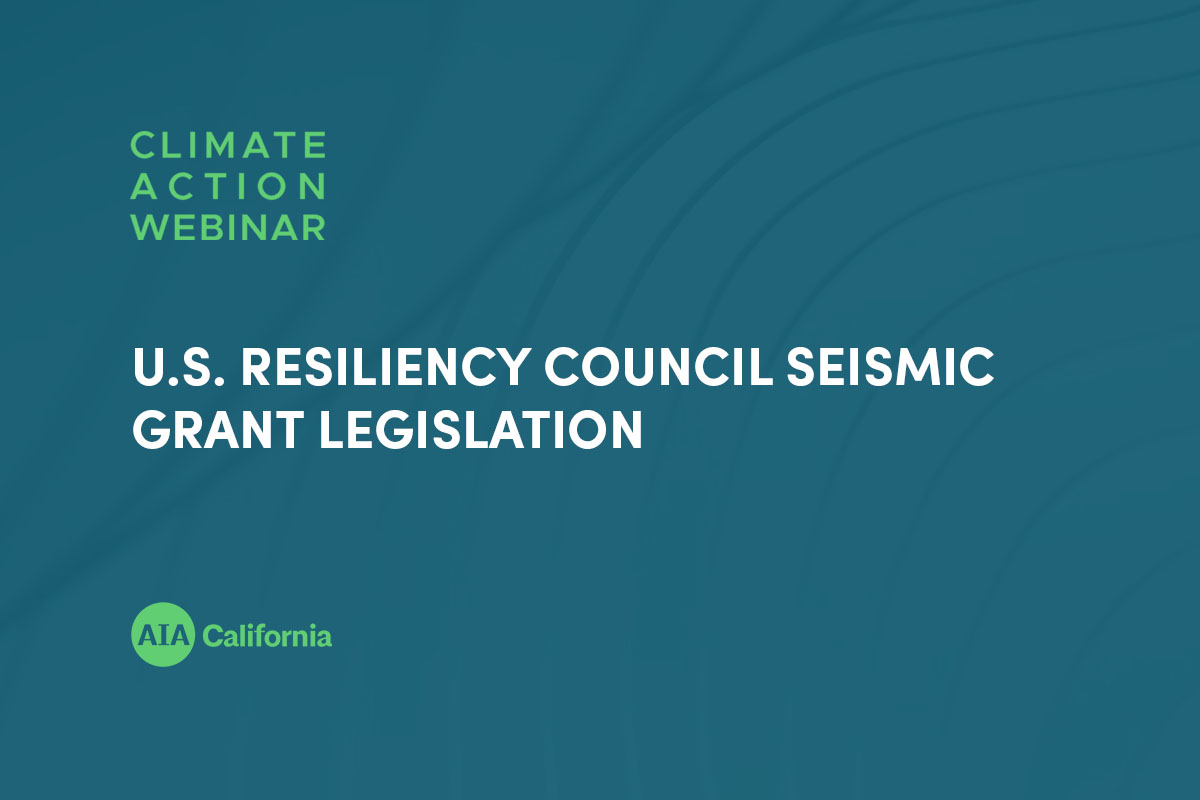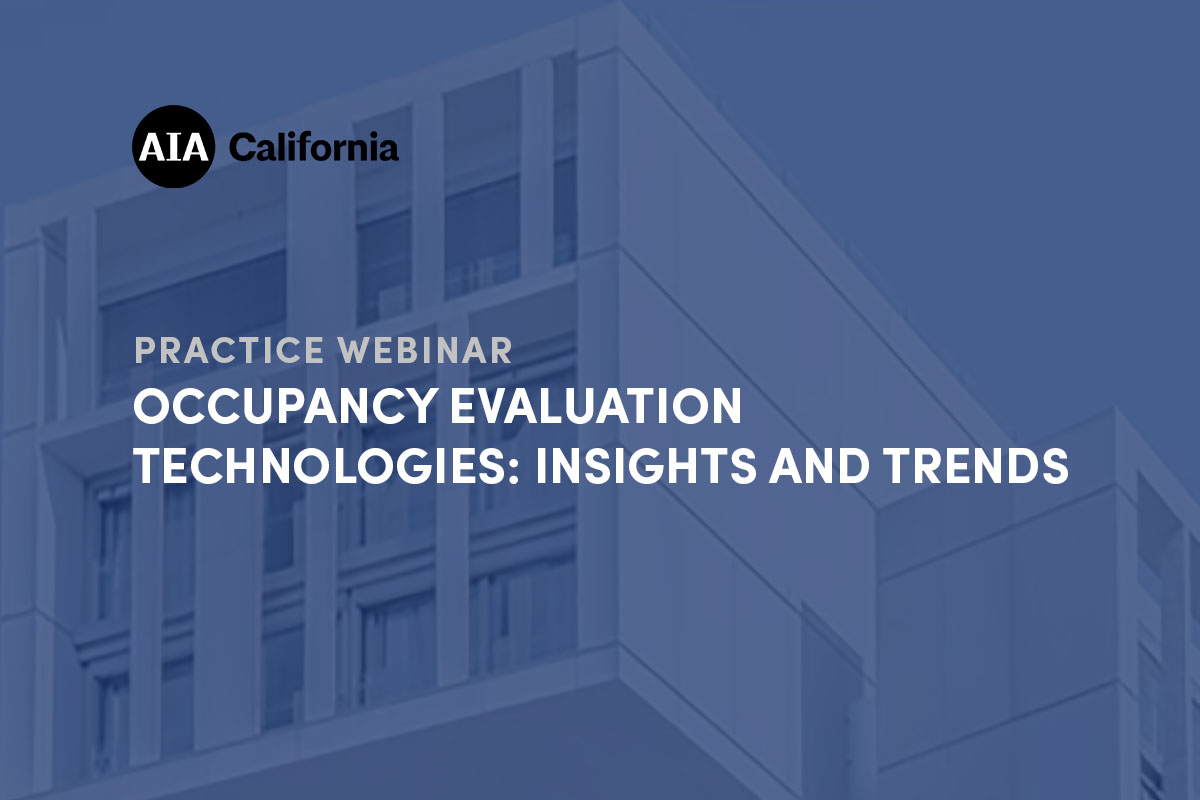Speaker: Flavia Grey, PhD - Principal | ZGF Architects, LLP. The purpose of this session is to provide an introduction to occupancy evaluation, the range of applications, and technologies available today. We will discuss the tradeoffs between effort of implementation and impact of the technology, and how to select the right application for your projects. Flavia Grey, PhDMore information and additional resources can be found here: https://aiacalifornia.org/NOTE: Multiple staff members from one office should register individually to receive separate log-ins.https://youtu.be/GVuDJwSLzcE .elementor-widget-tabs.elementor-tabs-view-vertical .elementor-tabs-wrapper{width:25%;flex-shrink:0}.elementor-widget-tabs.elementor-tabs-view-vertical .elementor-tab-desktop-title.elementor-active{border-right-style:none}.elementor-widget-tabs.elementor-tabs-view-vertical .elementor-tab-desktop-title.elementor-active:after,.elementor-widget-tabs.elementor-tabs-view-vertical .elementor-tab-desktop-title.elementor-active:before{height:999em;width:0;right:0;border-right-style:solid}.elementor-widget-tabs.elementor-tabs-view-vertical .elementor-tab-desktop-title.elementor-active:before{top:0;transform:translateY(-100%)}.elementor-widget-tabs.elementor-tabs-view-vertical .elementor-tab-desktop-title.elementor-active:after{top:100%}.elementor-widget-tabs.elementor-tabs-view-horizontal .elementor-tab-desktop-title{display:table-cell}.elementor-widget-tabs.elementor-tabs-view-horizontal .elementor-tab-desktop-title.elementor-active{border-bottom-style:none}.elementor-widget-tabs.elementor-tabs-view-horizontal .elementor-tab-desktop-title.elementor-active:after,.elementor-widget-tabs.elementor-tabs-view-horizontal .elementor-tab-desktop-title.elementor-active:before{bottom:0;height:0;width:999em;border-bottom-style:solid}.elementor-widget-tabs.elementor-tabs-view-horizontal .elementor-tab-desktop-title.elementor-active:before{right:100%}.elementor-widget-tabs.elementor-tabs-view-horizontal .elementor-tab-desktop-title.elementor-active:after{left:100%}.elementor-widget-tabs .elementor-tab-content,.elementor-widget-tabs .elementor-tab-title,.elementor-widget-tabs .elementor-tab-title:after,.elementor-widget-tabs .elementor-tab-title:before,.elementor-widget-tabs .elementor-tabs-content-wrapper{border:1px #d5d8dc}.elementor-widget-tabs .elementor-tabs{text-align:left}.elementor-widget-tabs .elementor-tabs-wrapper{overflow:hidden}.elementor-widget-tabs .elementor-tab-title{cursor:pointer;outline:var(--focus-outline,none)}.elementor-widget-tabs .elementor-tab-desktop-title{position:relative;padding:20px 25px;font-weight:700;line-height:1;border:solid transparent}.elementor-widget-tabs .elementor-tab-desktop-title.elementor-active{border-color:#d5d8dc}.elementor-widget-tabs .elementor-tab-desktop-title.elementor-active:after,.elementor-widget-tabs .elementor-tab-desktop-title.elementor-active:before{display:block;content:"";position:absolute}.elementor-widget-tabs .elementor-tab-desktop-title:focus-visible{border:1px solid #000}.elementor-widget-tabs .elementor-tab-mobile-title{padding:10px;cursor:pointer}.elementor-widget-tabs .elementor-tab-content{padding:20px;display:none}@media (max-width:767px){.elementor-tabs .elementor-tab-content,.elementor-tabs .elementor-tab-title{border-style:solid solid none}.elementor-tabs .elementor-tabs-wrapper{display:none}.elementor-tabs .elementor-tabs-content-wrapper{border-bottom-style:solid}.elementor-tabs .elementor-tab-content{padding:10px}}@media (min-width:768px){.elementor-widget-tabs.elementor-tabs-view-vertical .elementor-tabs{display:flex}.elementor-widget-tabs.elementor-tabs-view-vertical .elementor-tabs-wrapper{flex-direction:column}.elementor-widget-tabs.elementor-tabs-view-vertical .elementor-tabs-content-wrapper{flex-grow:1;border-style:solid solid solid none}.elementor-widget-tabs.elementor-tabs-view-horizontal .elementor-tab-content{border-style:none solid solid}.elementor-widget-tabs.elementor-tabs-alignment-center .elementor-tabs-wrapper,.elementor-widget-tabs.elementor-tabs-alignment-end .elementor-tabs-wrapper,.elementor-widget-tabs.elementor-tabs-alignment-stretch .elementor-tabs-wrapper{display:flex}.elementor-widget-tabs.elementor-tabs-alignment-center .elementor-tabs-wrapper{justify-content:center}.elementor-widget-tabs.elementor-tabs-alignment-end .elementor-tabs-wrapper{justify-content:flex-end}.elementor-widget-tabs.elementor-tabs-alignment-stretch.elementor-tabs-view-horizontal .elementor-tab-title{width:100%}.elementor-widget-tabs.elementor-tabs-alignment-stretch.elementor-tabs-view-vertical .elementor-tab-title{height:100%}.elementor-tabs .elementor-tab-mobile-title{display:none}} Additional Resources Additional Resources Learning Objectives Slidedeck_Occupancy Evaluation



